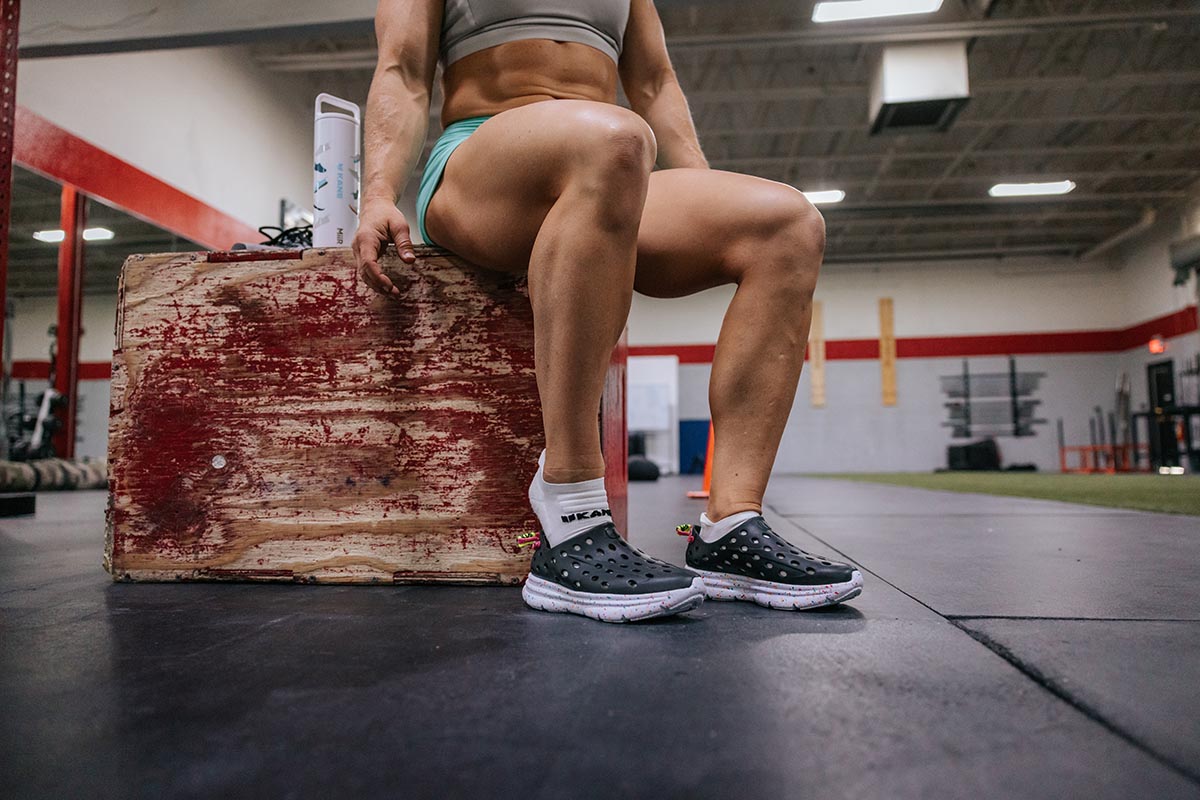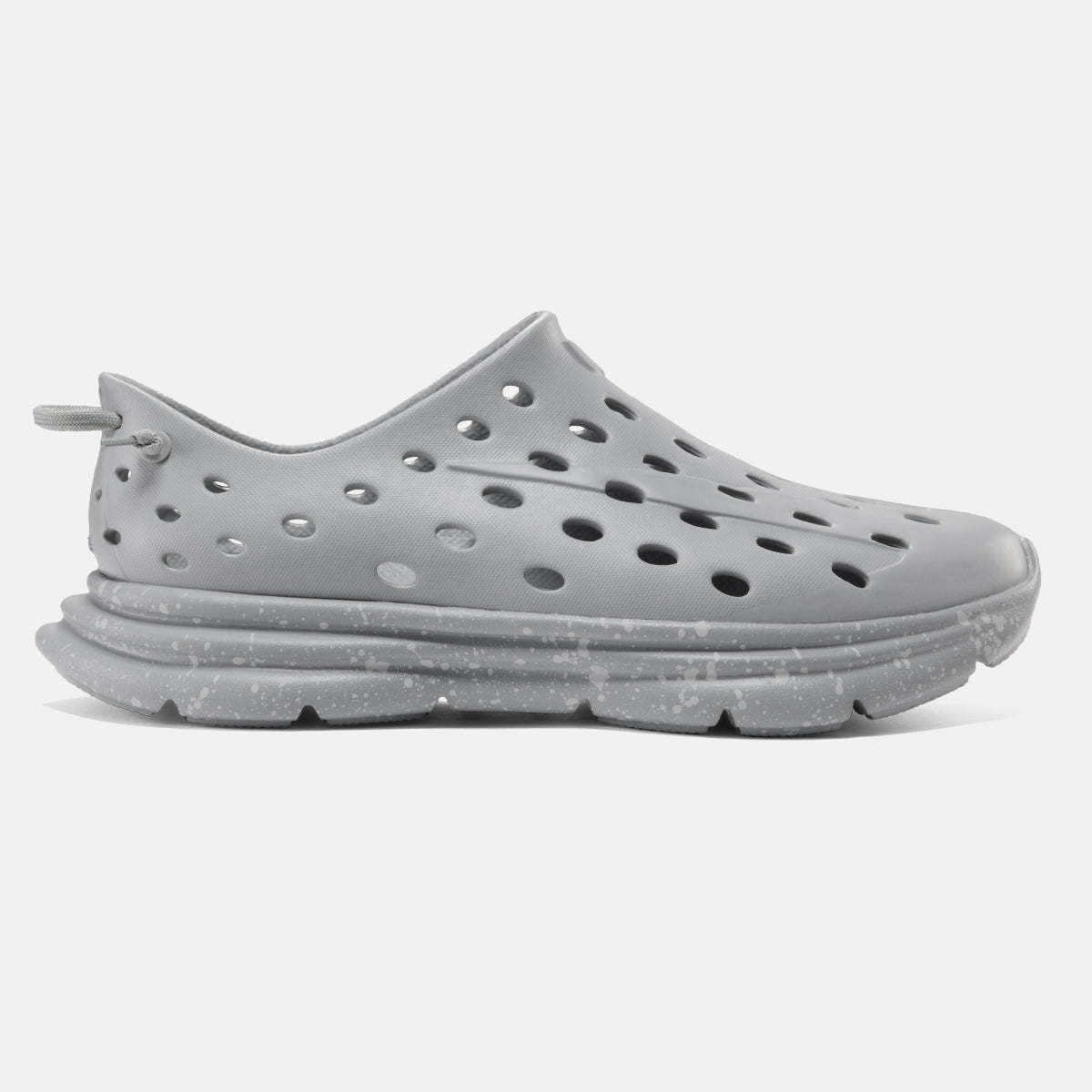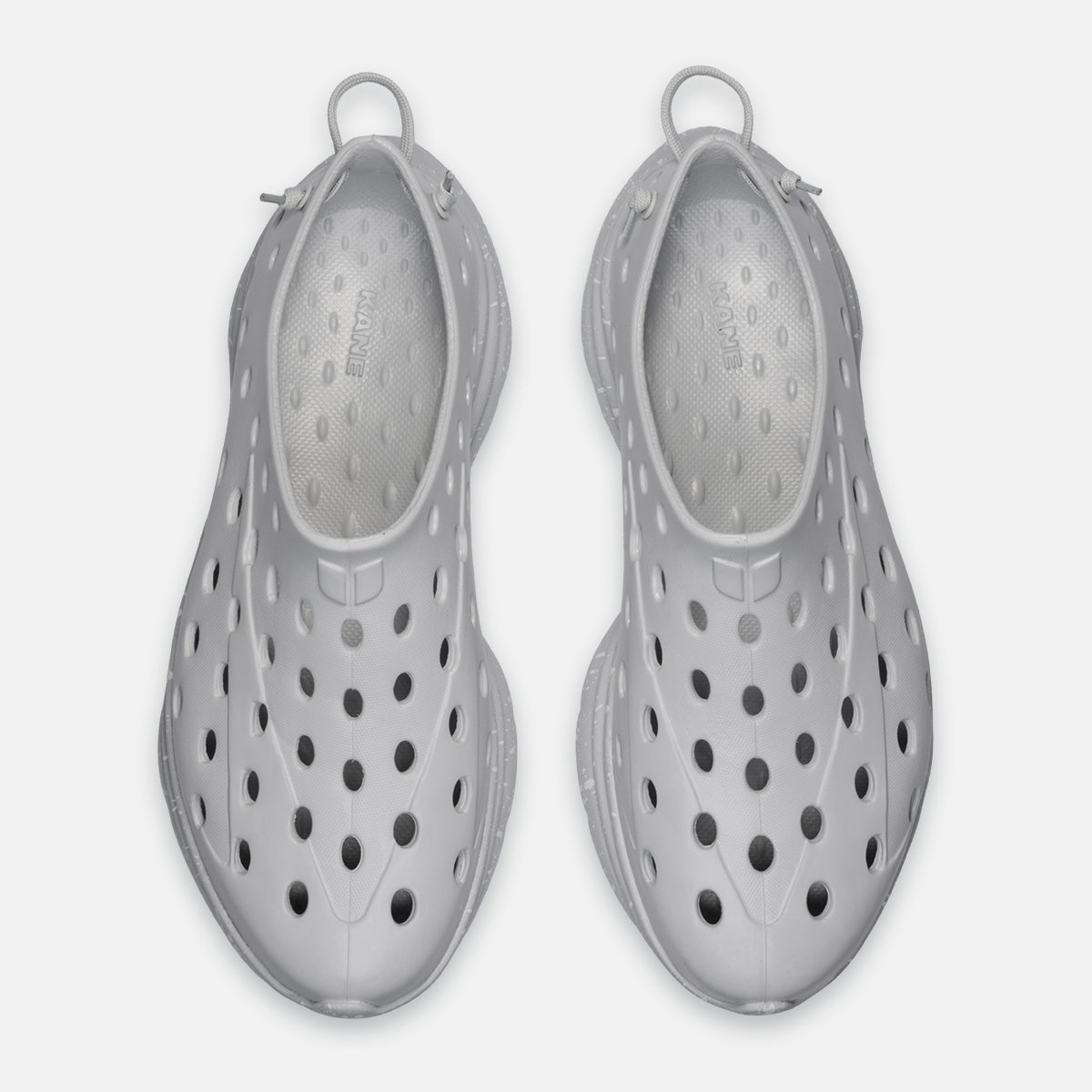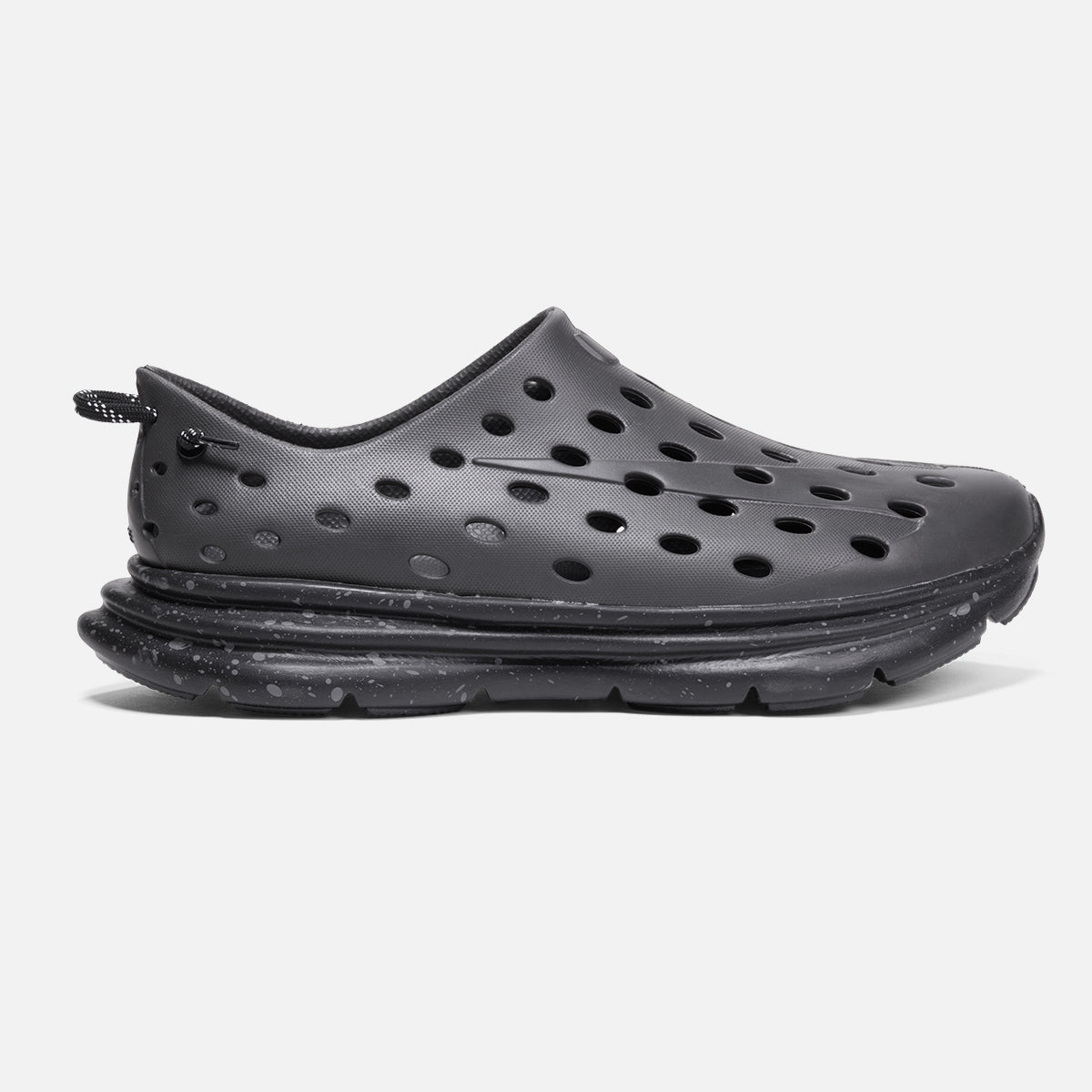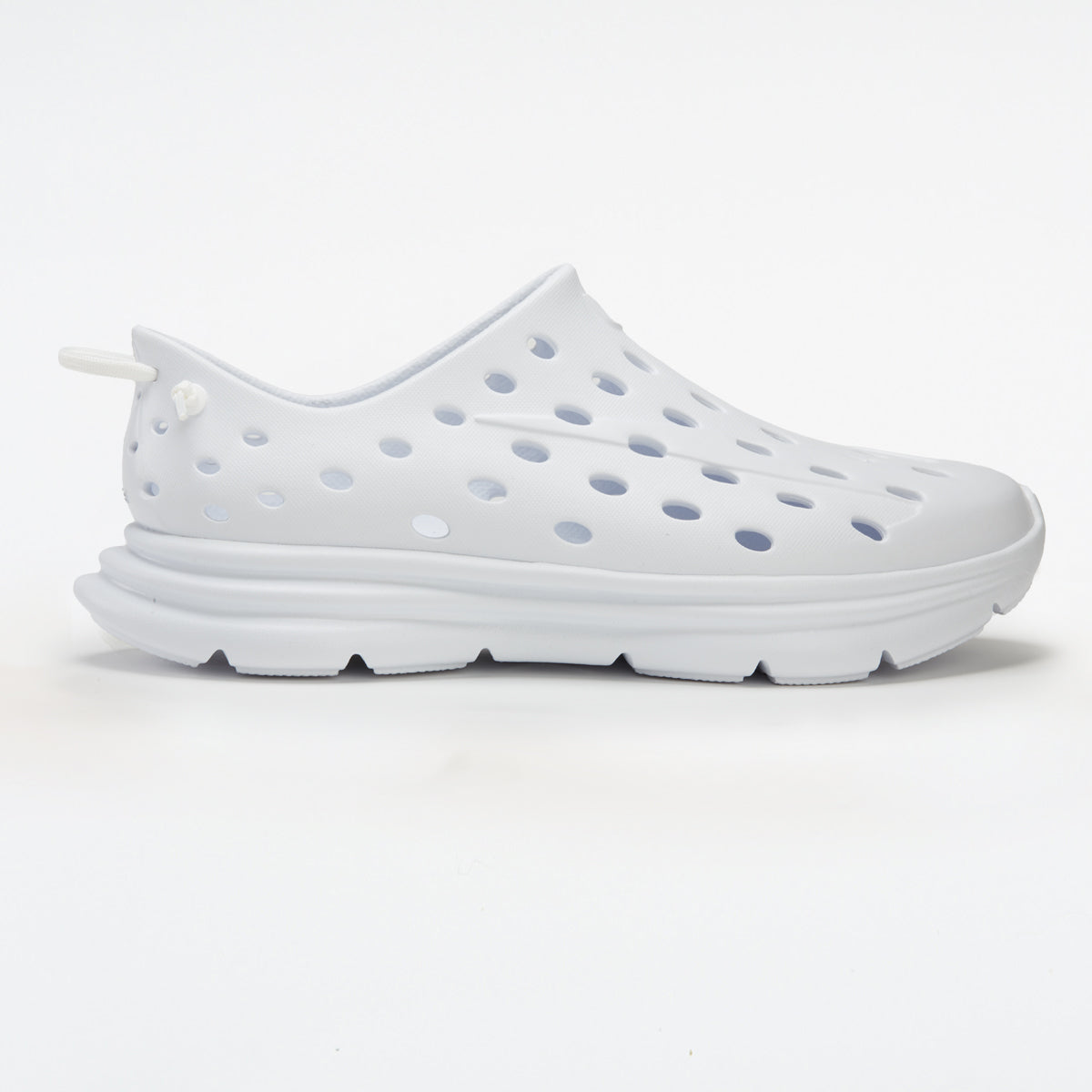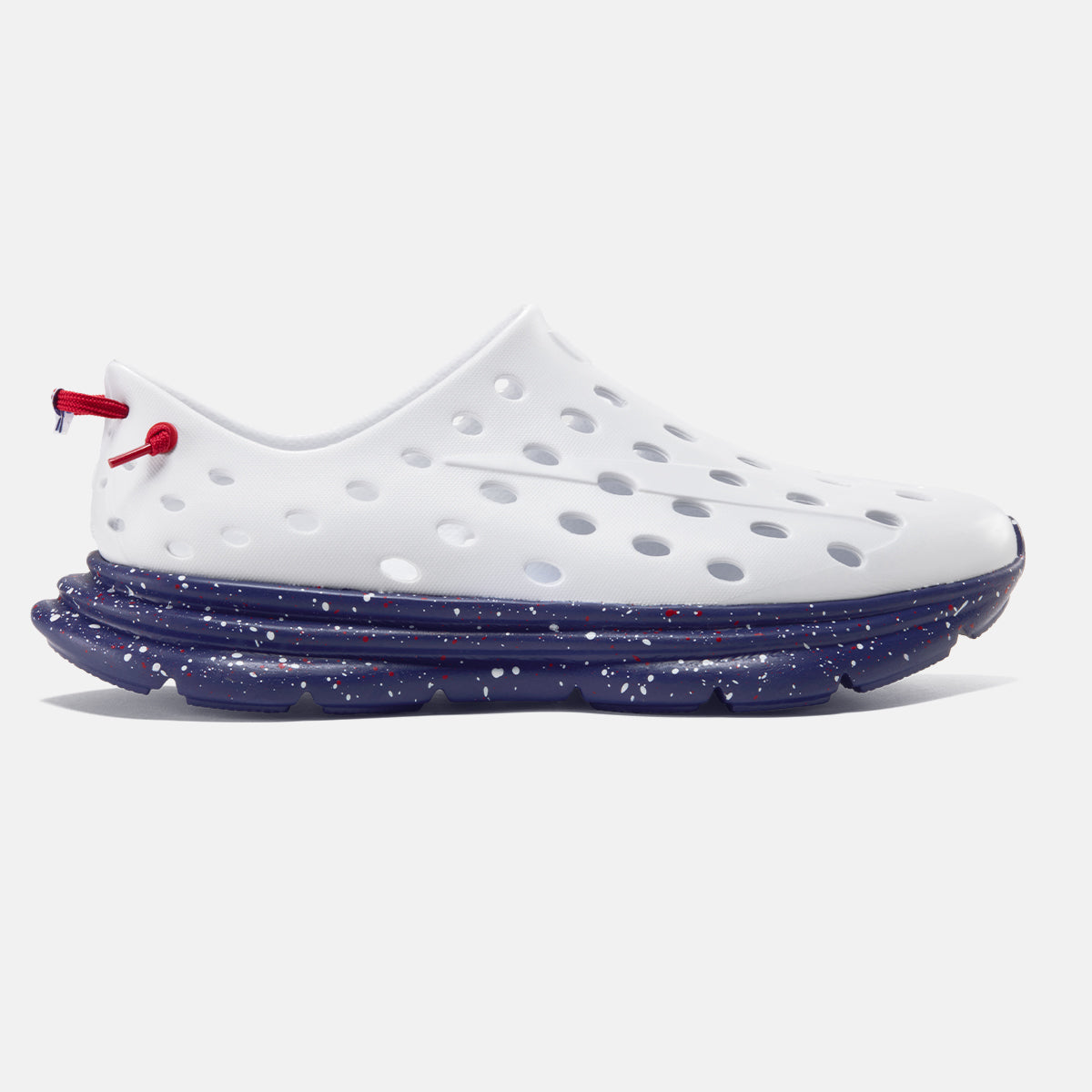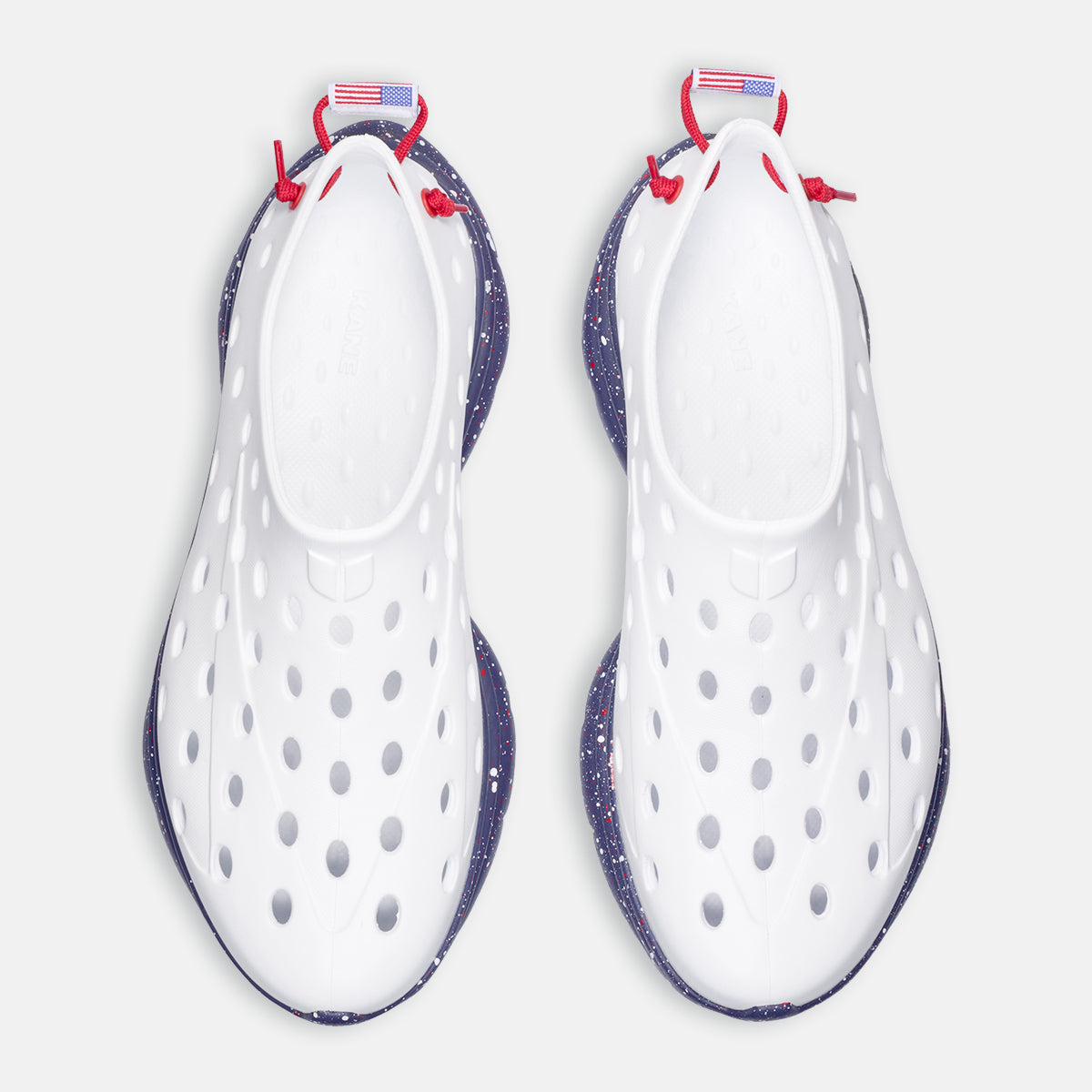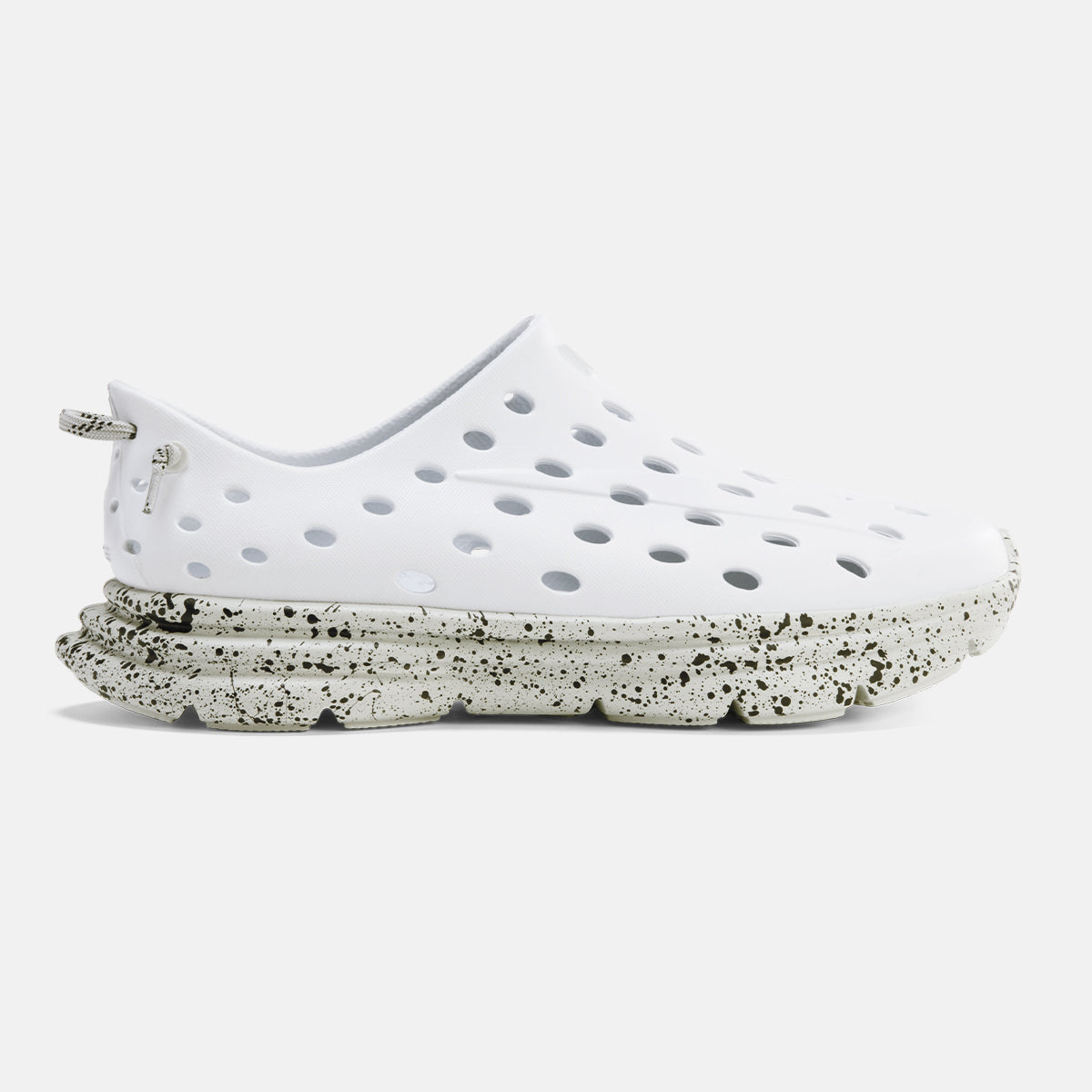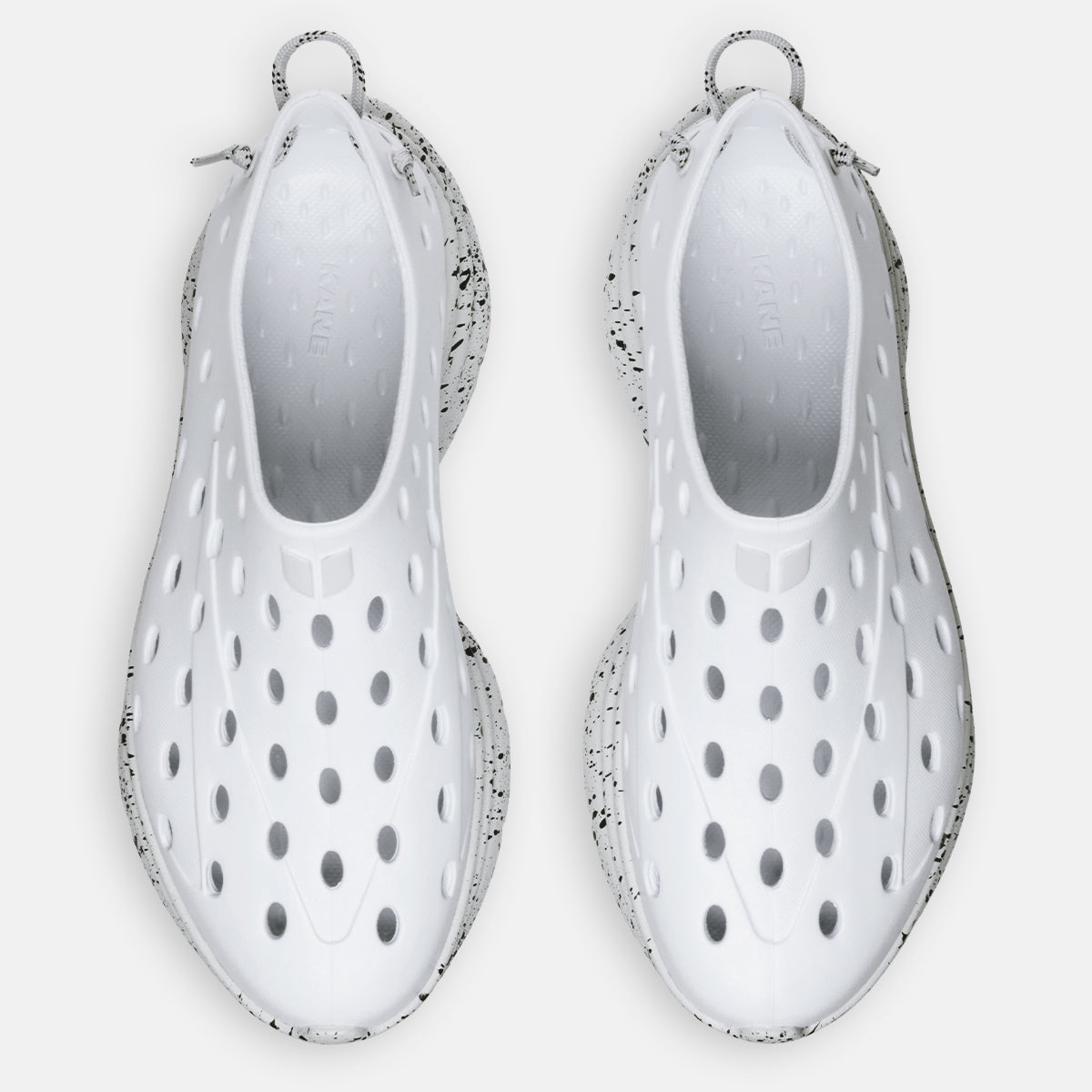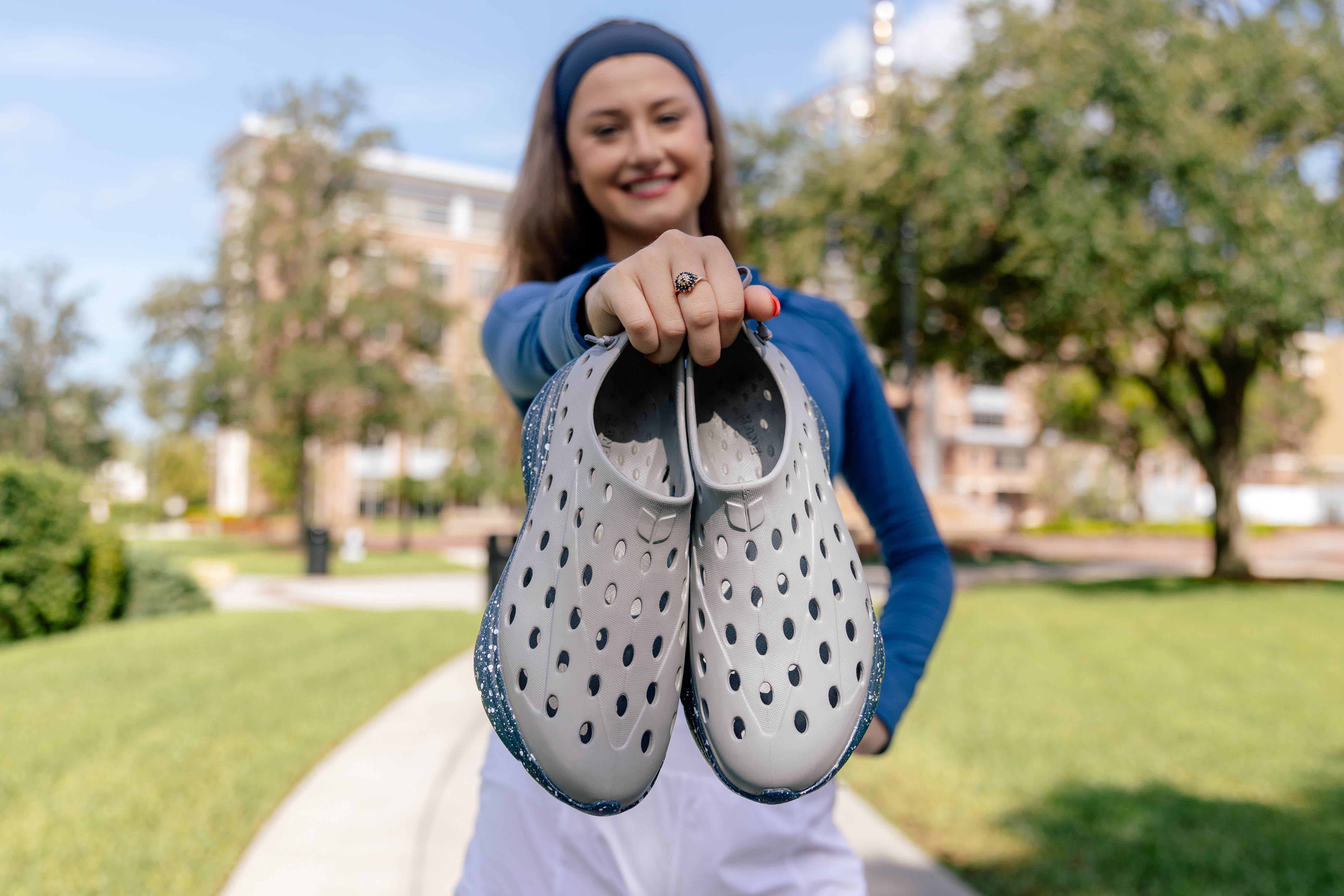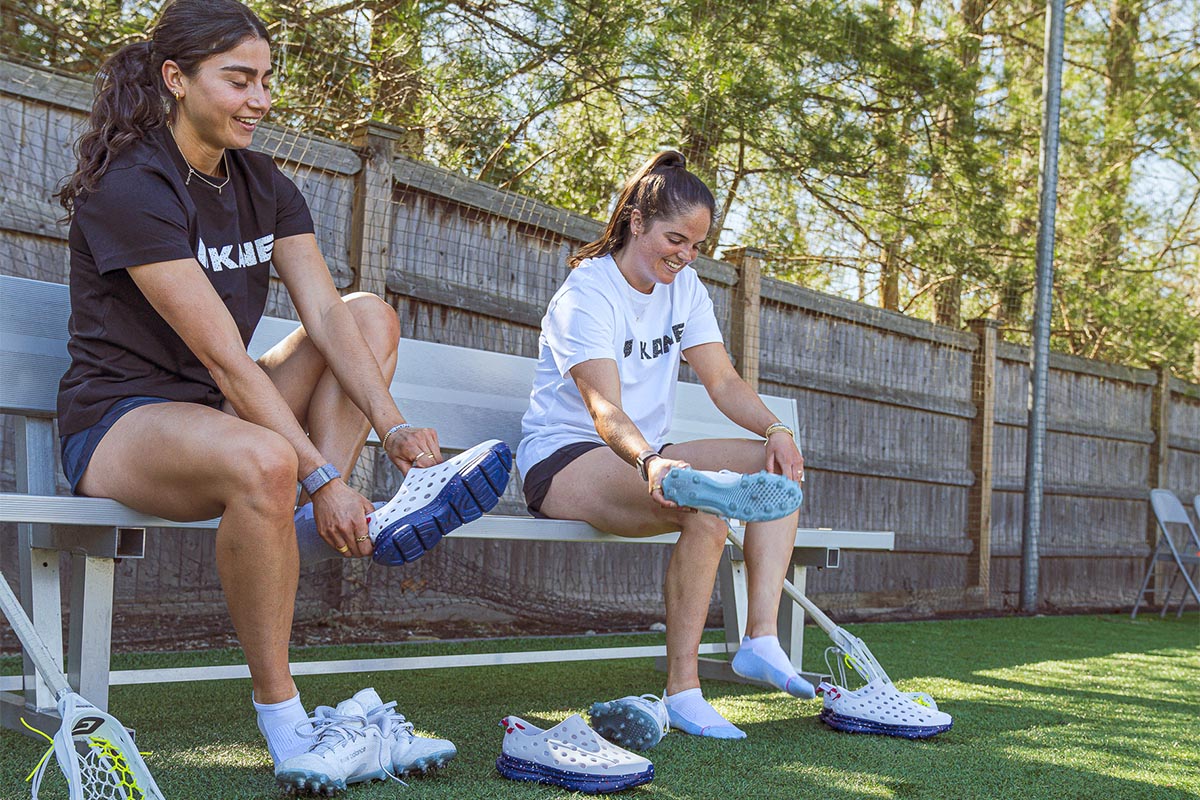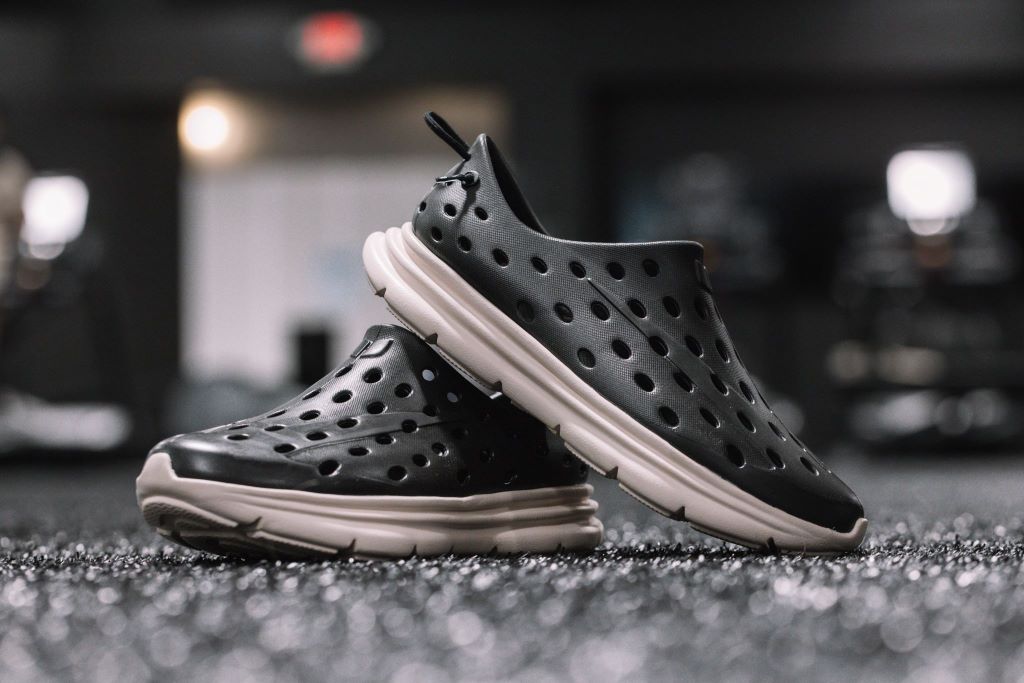The knee bone’s connected to the—thigh bone! You know the drill. Your body works like a well-oiled, interconnected machine. But what to do if there’s an issue with your knee that impacts those runs you love so much?
Running is a great form of cardio that shouldn’t be a pain. Knee pain after running, however, is all too common. And for many, it can hinder their ability to get back out there.
There are several factors that may cause pain for runners, from biomechanical imbalances to overuse injuries, and beyond. Fortunately, there are many preventive measures and treatments out there, such as wearing recovery shoes, that can help tackle the pain and get you back to feeling like yourself.
In this article, we’ll delve into the causes of common knee pain after running, and what can be done about it.
What are a few causes of knee pain?
Overpronation:
When your foot rolls unnaturally inward upon landing, this is referred to as overpronation. It’s commonly seen among runners who have flat feet (also known as fallen arches) and other foot problems.
Overpronation is a type of biomechanical imbalance that can create a misalignment in and surrounding the calf region, placing extra pressure on the knee. Subsequently, your knee will overwork itself, in turn causing strain, pain and discomfort in your knee joint and kneecap.
Supination:
When you experience supination as a runner, your ankle rolls outward during your run - the opposite (but equally unnatural) problem of pronation. When this happens, your foot can’t absorb shock nearly as well, and more stress is placed on the outside of the foot and knee. Runners with particularly high arches (versus flat feet) are more prone to this imbalance condition.
This kind of alignment abnormality leads to overstressing your knee cap and joint, which creates an unpleasant running experience and residual pain in the aftermath.
Overuse injuries:
An overuse injury occurs when too much stress is repeatedly placed on a specific part of the body. In the case of runners, this can happen anywhere between the hips all the way down to the bottoms of the feet. As a center point of the leg, knee pain can become a particularly sore spot.
Here are several overuse injuries related to the knee:
Patellar Tendinitis
Patellar tendonitis also referred to as jumper’s knee, is a condition where the patellar tendon (patella being the kneecap) becomes inflamed as a result of tiny tears. Runners, or athletes who engage in jumping sports or exercises, can become affected by this rather easily.
Jumper’s knee can even start to cause pain and discomfort while simply walking, climbing stairs, getting in and out of a chair, or having your knees bent for other reasons, depending on the severity.
Patellofemoral Pain Syndrome (Runner’s Knee)
PFPS, also referred to as runner's knee, is a term that’s used to refer to a dull pain felt in the front of the knee and around the patella (kneecap.) Typically this type of pain flares up mid-activity, but can also occur after sitting for prolonged periods, should someone be affected by it.
There are many ways to prevent runner's knee, as well as treat runner's knee, such as, icing, elevating, wearing proper footwear, and stretching (but we’ll get into more on that below!)
IT band syndrome
Iliotibial band syndrome, or IT band syndrome as it’s more commonly known, can develop while naturally bending and straightening during a run. This happens when the IT band, a thick hip-to-knee stretching band of tissue, is pulled too tightly over the outside of the patella, excessively rubbing against the bone.
This syndrome causes pain, aching, and/or burning on the outside of the knee from the inflammation and irritation of the IT band. These sensations can begin to run up the leg as well.
Posterior cruciate ligament (PCL) injury
Your posterior cruciate ligament runs behind your knee and connects your upper leg to your lower leg. Your PCL is bigger and stronger than your anterior cruciate ligament (ACL), but it can still be vulnerable to injury.
A PCL injury can range from a mild partial tear of the ligament to more severe damage. It is not as common for runners as some other running-related injuries, however it can still happen. When there is trauma to the knee, such as improperly landing, or falling directly on the knee, your PCL is at risk.
Anterior cruciate ligament (ACL) injury
Your ACL connects your thigh bone to your shin bone, which keeps your knee joint stable. An ACL injury is a tear of the ligament, and can cause your knee to rapidly swell and become painful.
While running, this can sometimes happen with a sharp change of direction, pivoting in place, or very suddenly stopping or slowing down (versus easing into the transition.) This type of injury is more common with sports that require frequent jumping, or are at a higher risk of knee impact (i.e. soccer, football, etc.) however runners are not risk free.
How can I prevent and treat knee pain?
RICE method:
RICE (Rest, Ice, Compression, Elevation) is a great method for tackling inflammation, aching pain and swelling from an injury.
Ice can be applied throughout your day at 15-20 minute intervals - using ice packs or by simply placing ice into a ziplock - just be sure to place a cloth between your knee and the ice to protect your skin. With your leg propped up on a pillow, use a compression bandage to minimize swelling and reduce pain.
Cross-train:
Your body needs a break period from high-impact activities that caused the injury in the first place. Cross-training helps immensely here. This doesn’t mean you can’t stay active, just be mindful of the activities you’re engaging in, and keep them lower-impact. Once your body has recovered and had sufficient time away from, in this case, running, you can ease back into it.
Wear proper footwear:
Running shoes
Finding footwear for running that has proper support, cushioning and fits correctly is key to curbing injury. The right running shoe will keep you balanced and in control.
Orthotics
Sometimes no matter how well the shoe fits, you still need custom orthotics inserts. If you have overpronation, excessive supination, arthritis, foot curvature malformations, or any other foot issue, it’s possible this extra support is needed for activities.
Recovery shoes
Wearing proper recovery footwear can help you restore and renew after high-impact activities. Great for wearing around the house, or even out and about, the right recovery shoe will be breathable, stimulating, and provide the comfort and support you need post-activity.
Nonsteroidal anti-inflammatory drugs (NSAIDs):
OTC NSAIDs, as long as they are taken with knowledge and care, can be effective in the short term. They can help with the pain and inflammation associated with knee injuries. It’s very important to always read the label, as well as the information packet that comes with Advil, etc. If there is any uncertainty about dosage, health or safety, always check with a healthcare professional before proceeding.
Knee joint bracing:
A supportive knee brace or sleeve recommended by a specialist can help keep your knee joint stable and secure, while preventing any subsequent damage. By keeping your knee in this support, associated pain can also be remedied (even if in part.) The types of braces available for knee-specific injuries are:
- prophylactic
- functional braces
- rehabilitative
- patellofemoral braces
Stretching and strengthening exercises:
If your muscles are strong, your knees have more support and are relieved from doing too much of the work. This is important even if you are not a runner, but experience generalized knee pain. Strengthening and stretching out your leg and buttock muscles (aka quadriceps, hamstrings, and glutes,) can significantly improve pain felt in your knees.
If warm ups and cool downs aren’t currently part of your routine, it’s time to change that! Nobody wants to deal with stiffness, or worse - pain and injury - before, during or after a run.
Warm up (pre-run)
Spending some pre-run doing leg swings and lunges (as a few examples) can help improve your flexibility, joint mobility and increase blood circulation to your muscles in preparation.
Cool down (post-run):
Post-run, be sure to stretch your legs out to properly relax your muscles instead of just plunking down for good. Try not to shift >suddenly from an active state into a stationary state.
Check your gait and foot strike:
A running specialist can help you assess your gait while running, as well as your foot strike while running.
- Running Gait: When it comes to your running form, you’ll want to ensure there are no abnormalities or biomechanical problems. A running specialist can correct any issues causing pain or imbalance through running shoe changes and/or insert additions.
- Foot Strike: The way your foot hits the ground matters. A running specialist can evaluate your foot strike and help you make the necessary adjustments to prevent associated knee pain from recurring.
See a physical therapist:
Physical therapy can help treat knee pain and discomfort through identification, aided muscle strengthening, and implementing proper movement patterns. Physios can help by implementing many techniques, such as:
- Joint manipulation: Relieves pain and improves mobility via quick, small movements that push a joint beyond its anatomical range of motion.
- Joint mobilization: Relieves pain and improves mobility via slow, gentle movements of the joint within its anatomical range of motion.
They may also suggest that a gradual return to your activity will help with pain management. Don’t jump the gun too quickly before you’re healed!
When to contact a medical professional
If your knee injury progresses, or does not heal from at-home treatment within a week’s time or so, it would be wise to call your physician. Your general practitioner may refer you to a knee specialist or surgeon, as you may need a more thorough assessment, possibly x-rays, and/or surgical intervention.



































